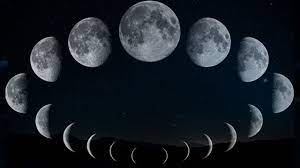
In the Hindu calendar , every lunar month is divided into two parts, which is known as Paksha.Each part corresponds to a certain phase of moon.
In Hindu traditions, the auspiciousness of a day is decided on the basis of its Paksha, and these phases of moons are important in performing various religious rituals.
Krishna Paksha and Shukla Paksha
Every lunar month is divided into two parts ,known as Krishna Paksha and Shukla Paksha respectively. Shukla Paksha is generally considered auspicious and favourable ,whereas Krishna Paksha is considered unfortunate , so generally important decisions of life, and religious activities are performed in the period of Shukla Paksha.
Krishna Paksha
Krishna Paksha starts on the day of Poornima(Full Moon Day), and ends on the day of Amavasya( New Moon Day), spanning over a period of about 15 days. During this time the brightness of moon keeps decreasing , so it is considered unfavourable.
On Purnima , mind has the highest power to concentrate and absorb positive energy, and on Amavasya mind is prone to ignorance and negativity.
Since the brightness of moon starts fading , and finally it approaches darkness , so this period is named Krishna Paksha, Krishna meaning black or dark.

Shukla Paksha
Shukla Paksha is the period of auspiciousness . It starts on the day of Amavasya( new moon day) and ends on the day of Purnima (full moon day).
During this period the brightness of moon increases constantly everyday . Thus it is the period of waxing moon/shiny moon.
The period from the tenth day of Shukla Paksha is considered as favourable for spiritual /religious activities and for taking important steps in your life.
Krishna Paksha and Shukla Paksha corresponds to half-half portion of the lunar months of Vedic calendar( like Chaitra, Baisakh, Asaadh etc).